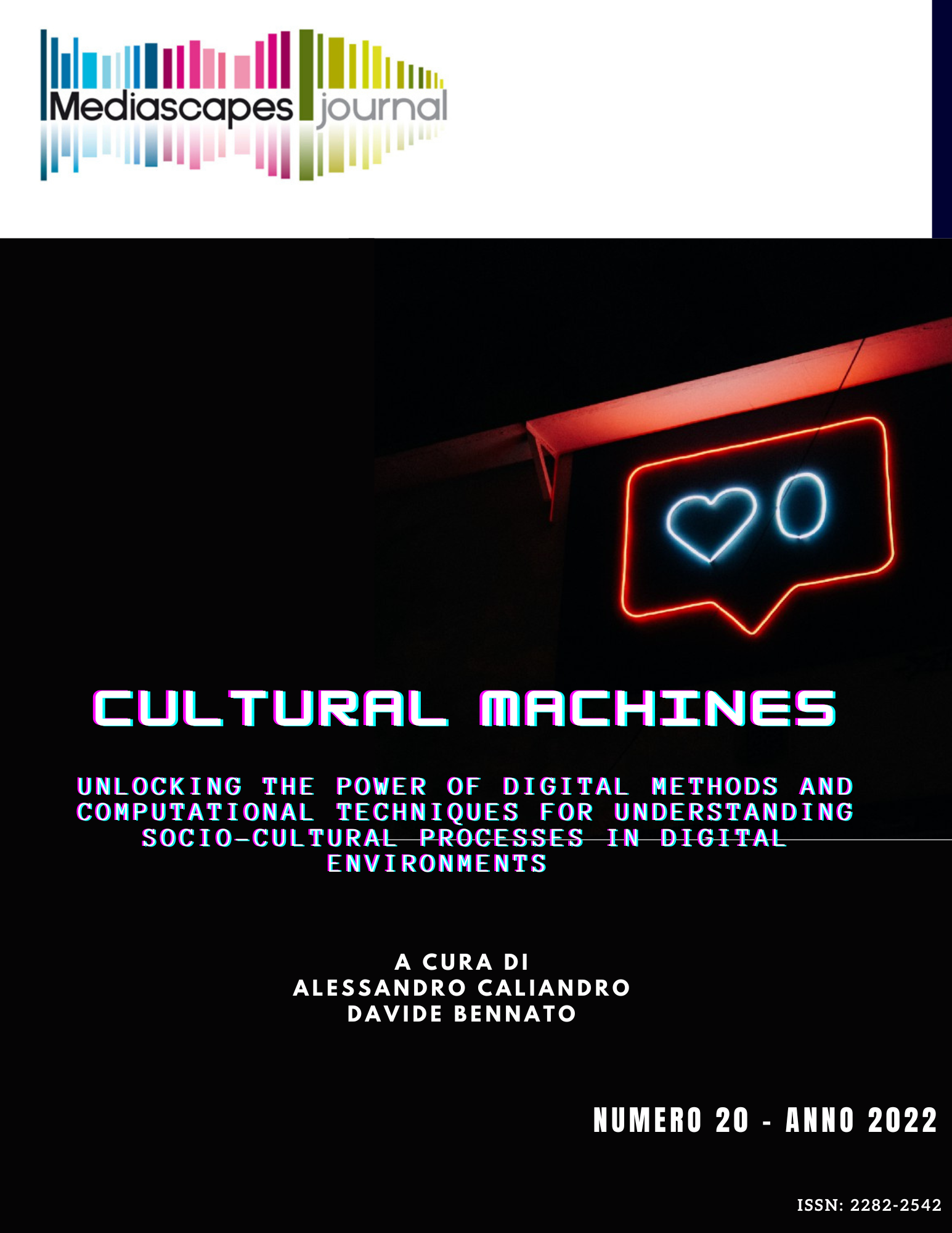Techno-aesthetic Narratives in Digital Journalism
The Case of Newsgames
Parole chiave:
tecno-estetica, newsgames, gamification, giornalismo, narrazioniAbstract
The structural connection between gamification processes and the dissemination of information in online environments created by the affordances of digital media has led to the rise of newsgames in journalism. These are computerized games intended to illustrate a specific, concrete news item to a participatory, interactive audience. This development has sparked discussion, with some believing that it is harmful to treat serious news using methods typical of entertainment, and others calling attention to the expressive and learning opportunities that derive from applying videogames to journalistic reporting on reality. In this article, I argue that the debate on gamification processes in news information can be enriched by considering the narratives conveyed by newsgames as “techno-aesthetic narratives.” The concept of techno-aesthetics, developed by Gilbert Simondon, refers to the extension of human sensibility into technological artifacts that prolong its faculties, allowing them to enter into relationship with a wider social and cultural reality, thanks to the technological extension. The techno-aesthetic paradigm has been investigated in many fields, from literature to the visual arts, including forms of communication mediated by digital devices, but it has never been applied thus far to news narratives. Through an analysis of the work of Pietro Montani, who has modernized thought on techno-aesthetics by updating it to include digital media, I show that the essential traits of this paradigm can also be applied to journalistic narratives conveyed by newsgames. More specifically, I focus on the following four characteristics of the techno-aesthetic paradigm: 1. The interactive imagination; 2. The conception of gamification as a tool for reflecting on reality; 3. The transformation of users’ experience and schemas through the techno-aesthetic experience; 4. The role of the “performance of sensibility” in this transformation of subjectivity. In tracing out the connection between these four characteristics and newsgames, I examine both major studies on the narratives conveyed by these journalistic productions and two case studies: The Refugee Challenge, produced by the British newspaper The Guardian; and Rebuilding Haiti, created by the European Journalism Centre. I then explain why I believe it would be useful to extend the techno-aesthetic paradigm to journalistic narratives, which have not yet been considered from this angle. First of all, they can prompt reflection on the role of digital journalism in the implementation of a “techno-aesthetic education” as envisaged by Montani (2015). Furthermore, discussing techno-aesthetic narratives can help shed light on some of the informational and ethical potential of a journalism that conveys news to its audience through “ludic” methods, thereby furthering reflection on the link between journalistic information and gamification processes. Techno-aesthetic narratives also find a place in studies on the changing concept of objectivity in digital journalism, such as Michael Schudson’s notion of an “objectivity of empathy” (2018). I conclude by setting out the potential risks, especially the ideological ones, inherent in techno-aesthetic narratives conveyed by newsgames and suggest types of studies that will be needed in the future to evaluate the real impact of these narratives.
##submission.downloads##
Pubblicato
Come citare
Fascicolo
Sezione
Licenza

TQuesto lavoro è fornito con la licenza Creative Commons Attribuzione 4.0 Internazionale.
Gli autori che pubblicano su questa rivista accettano le seguenti condizioni:
- Gli autori mantengono i diritti sulla loro opera e cedono alla rivista il diritto di prima pubblicazione dell'opera, contemporaneamente licenziata sotto una Licenza Creative Commons - Attribuzione che permette ad altri di condividere l'opera indicando la paternità intellettuale e la prima pubblicazione su questa rivista.
- Gli autori possono aderire ad altri accordi di licenza non esclusiva per la distribuzione della versione dell'opera pubblicata (es. depositarla in un archivio istituzionale o pubblicarla in una monografia), a patto di indicare che la prima pubblicazione è avvenuta su questa rivista.
- Gli autori possono diffondere la loro opera online (es. in repository istituzionali o nel loro sito web) prima e durante il processo di submission, poiché può portare a scambi produttivi e aumentare le citazioni dell'opera pubblicata (Vedi The Effect of Open Access).


